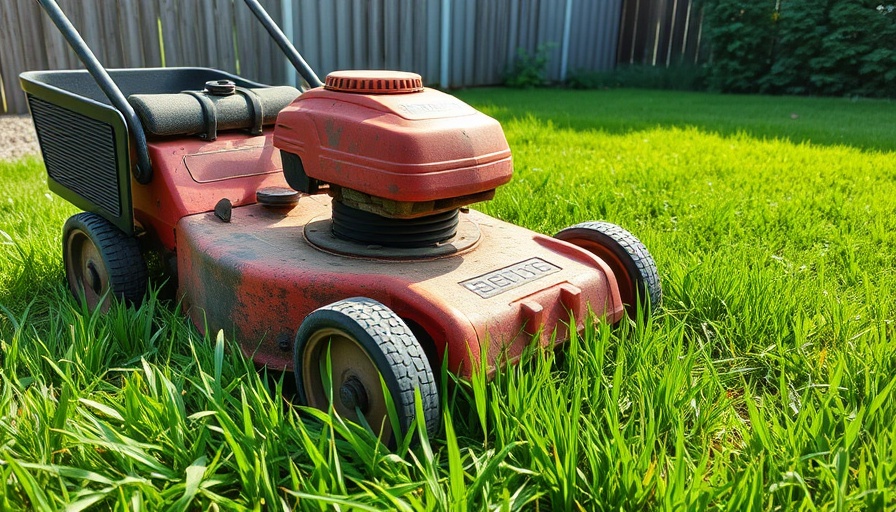
Essential Spring Lawn Care Tips for Dallas Residents
As Dallas springs into action from the winter chill, homeowners face the task of preparing their lawns for the upcoming scorching Texas summer. With careful planning and dedication, it’s possible to cultivate a lush, green lawn that thrives against the heat. Here’s a detailed guide featuring crucial spring lawn care tips that every Dallas homeowner should consider to ensure their yard stands tall during the hottest months.
1. Testing and Preparing Your Soil
Understanding the condition of your soil is fundamental to your lawn's health. Experts recommend testing your soil every two to three years. Ideally, a soil test should occur in the winter, but if spring has arrived, aim to do this by early March. In Dallas, most lawns consist of Blackland Prairie soil, characterized by a high clay content that tends to be alkaline. The soil test results will inform you about nutrient deficiencies, specifically nitrogen, phosphorus, and potassium. Most Dallas soils are generally nutrient-rich but may require nitrogen supplementation in the spring. Consider adding organic materials such as compost or grass clippings to enhance soil fertility.
2. Inspecting Your Mowing Equipment
Before the mowing season begins, it’s crucial to prepare your equipment for optimal performance. Check your mower and weed eater thoroughly for any signs of wear or damage, particularly if they weren’t winterized. Key maintenance tasks include sharpening the blades to ensure clean cuts, inspecting air filters, and changing the oil. Properly maintaining your mowing equipment prevents malfunctions during critical mowing periods.
3. The Vital Role of Watering
A well-timed watering routine is essential in Dallas's climate. It’s important to understand your lawn's unique moisture needs to prevent over- or under-watering. Early spring is the best time to establish a consistent watering schedule. Ensure your irrigation system is functioning properly, checking for any leaks or sputtering sprinkler heads that may compromise your lawn’s hydration. Aim to water deeply and effectively—deep root watering encourages healthy and resilient grass.
4. Effective Weed Management
Spring is the ideal time to tackle weeds before they take over your lawn. Successfully controlling weeds often involves a combination of mechanical methods and herbicide applications, depending on the severity of the problem. There are plenty of organic options available that can effectively manage weed growth without harming your lawn or local ecosystem. A proactive approach will secure your lawn’s overall health.
5. Start A Fertilizing Regimen
Correct fertilization practices are pivotal for maximizing your lawn's growth potential. As spring begins, applying a nitrogen-rich fertilizer can help support lush growth. The timing of your fertilization can significantly impact the vitality of your lawn, making it an essential consideration in your spring lawn care strategy. Research suggestions for optimal fertilizers for Dallas grass types and follow best practices for application.
6. The Importance of Aeration
Aerating your lawn in early spring can create the perfect environment for growth. By perforating the soil with holes, you allow air, water, and nutrients to penetrate the grass roots. This also reduces soil compaction and improves drainage, which enhances overall growth potential. Aeration can be performed either by using manual tools or renting an aerator making it accessible for homeowners.
7. Overseeding for a Thriving Lawn
Once you’ve aerated, consider overseeding to promote healthy grass growth. Overseeding fills in bare spots and improves the density of your lawn. It’s also an opportunity to introduce new grass varieties that may better withstand the Texas heat. Ensure you select grass seed appropriate for your soil type and Dallas’s climate conditions for the best chance of success.
8. Tackling Thatch for Grass Vitality
This season is also the right time to dethatch your lawn if it has developed a layer of thatch—a dense layer of organic matter that can occur over time. Excessive thatch can suffocate grass roots, so carefully plan to dethatch your lawn if necessary to enhance overall health and aesthetics.
9. Managing Pests Early
As spring brings warmer temperatures, pest management becomes critical. Early intervention can prevent infestations that could otherwise damage your grass. Regular inspections for signs of pests, alongside maintaining a healthy lawn, will help keep these unwelcome invaders at bay. Familiarize yourself with local pests common in Dallas lawns and actively monitor your yard.
10. Establishing a Routine
Routine upkeep is vital for a thriving lawn. Establish a spring lawn care routine based on the tips outlined above, checking off each task as you progress. Consistent efforts now pave the way for a lush lawn come summer.
11. Final Thoughts
The key to thriving lawn care in Dallas is preparation and timely maintenance. By implementing these spring lawn care tips, homeowners can ensure their lawns are ready not just to survive but to flourish throughout the scorching Texas summer. Tailoring care to the distinct needs of your lawn will result in resilience, beauty, and joy in your outdoor space.
 Add Row
Add Row  Add
Add 


Write A Comment